Kevin did his tips last year for 24 Hour Comic Day, and so this year I'll do mine.
Some caveats-- I've finished 3 24-Hour Comics in the last 3 years, and every year I swore I'd never do it again. Twelve months has a tendency to make one forget one's swears. But the point is-- I have no secret to avoiding misery. So don't expect me to make it easy on you; it won't be. That's why you can be so proud afterwards.
1. WORK SMALL. Every year I see people bringing in great big sheets of bristol board to work on their 24-Hour comics, and every year I see some or all of them drop out. Why? It's not like they're putting in more detail, it's just the sheer amount of real estate they need to cover. God help them if they set something in space or at the bottom of a well-- that's a good 15 minutes per page of filling in black areas right there. I always work at 8 1/2 by 5 1/2-- half a letter-sized piece of paper, and then reproduce it at 100%. That's a good mini-comic size.
2. WORK CHEAP. Kevin and I have spoken before about the Pentel Pocket Brush Pen. I use that and cheapo HP laser paper from Office Max. With the amount of half-assed drawing that gets done at these things, it would make me feel sick to be using up nice paper, and the cap-it-and-forget-it nature of the PPBP works really well for these extended sessions, much better than a Windsor & Newton brush would. Similarly, Kevin uses a flair pen for his 24-hour comics. That's probably an even better idea because you don't have to rotate the page around when you ink, like you have to with a brush.
3. WORK OUT A DRAWING STYLE. It'll happen anyway while you're working, but it's nice to go into the event with a sense for how to draw simply and effectively, while still being able to communicate things like depth and facial expressions. You'll find that your patience for cross-hatching details on faces will dwindle by about hour 10.
4. KEEP YOUR DESIGNS SIMPLE. No-nos for characters: stubble, Hawai'ian shirts, tentacles, the Jack of Hearts. No-nos for settings: outer space, the middle of a jungle, a junkyard, a balcony overlooking New York City. Don't think that these details will just give you mindless things to do. They will, but you'll hate yourself for it. Your hands are going to hurt by the end of this thing; you don't want to have to put in any detail you don't need to.
5. DECIDE THE GENRE BEFOREHAND. I think it's nice going into the event knowing basically what kind of story you're going to make. If you've decided on a Western, for example, it gives you a bit of time to think about the sorts of things you want to have in your story, the basic structure, and some thoughts on what kinds of characters will populate it. But you should ONLY decide the genre, and then when you start...
6. USE A RANDOMIZER TO GIVE YOU IDEAS. I use a Pictionary card, which has five words on it that are pretty random, but at the same time fairly ordinary words. This is nice because then you have a bunch of unrelated ideas that you have to put into a story, but aren't making a story about yellow-bellied snorklewackers, or something else completely loony, which is exactly what you'd get if you asked your friends. Randomization has several benefits. One is expectation management. Because you can't plan out your story, you don't build it up in your head to be the most interesting story of all time. Drawing a page an hour all night is going to make some pretty shoddy-looking stuff, so it's good if you're not butchering your all-time favorite tale that you've been waiting years to accomplish. Another benefit is that it gives you ideas. When you have a bunch of completely unrelated words, you are working full-time just to create a story that makes sense, which frees you from having to be terribly creative and/or hilarious. You're bound to make some funny jokes or clever plot twists just getting your characters from A to B, so it's nice to not worry about what ingenious idea you have to put in next.
7. PAGINATE YOUR PAGES BEFOREHAND. I like to use this template for paginating 24-page minicomics. It means that other people can't really read your book while you're doing it because when they've had no sleep, there's no way they're figuring out a pagination guide. But it saves you a lot of cutting, pasting, white-taping, and whatnot when you get the thing printed. I always make a mini-comic of my 24-Hour comics, and not having to worry about how to arrange the pages makes me much more relaxed.
8. DO NOT GIVE UP. C'mon, would you rather be exhausted and miserable and finish a 24-page comic or exhausted and miserable and not?
9. BRING A LUNCH. There's always a snack table at our event, but at about lunchtime, people are always having to go to the bar next door and burn valuable time ordering a Reuben sandwich. Just make a sandwich and put it in your fridge the night before. And for God's sake, don't just pig out on the chips. You've got to stay alert and smart for 24 straight hours; Pringles won't do.
10. GET SOME SUN. Just go outside and let the sun wake you up a bit. You won't be that tired when it's still daylight, but it still gives you a little boost to have some real, full-spectrum light getting into your eyes.
11. SHAKE OUT YOUR HANDS A LOT. Give those guys a break. They're working hard. A five-minute break will make them a lot happier than they were.
12. BALANCE FUN AND WORK. If you're too serious, 24-Hour Comic Day can be a real grind. Chat up your fellow cartoonists. Make fun of the panel you just drew. Discuss the music choices that were made at your location. But also remember this: if you're not working, stay out of the way of people who are. 24-Hour Comic Day is a pretty quiet affair, with a few people taking a valuable minute or two to say something to someone, but it's mostly nose-to-the-grindstone, drawing-as-hard-as-you-can work. If you gave up two hours ago and went to the bar to get loaded, don't come back and laugh it up with your buddies, dammit; people are trying to draw here.
Have a good time-- and put your comic online, would ya? They're fun to read.
UPDATE: Number 13. Rereading Kevin's post from last year, I wanted to second his point about not pencilling the whole book, then inking it. One, it sets you up to do a lot of hand-crampingly hard work right at the end of the night. Two, it's hard (especially when sleep-deprived) to truly determine how much pencilling you need to do in order to ink it well. Three, as Kevin mentioned, it makes it far more complicated to gauge your time-usage. It's far easier, and more useful, to finish a page an hour. Now, while I keep to this schedule for the most part (probably 75%), my work process is a slow movement from small increments to large. In the first hours, I do whole pages, written, pencilled, and inked, before I move on to the next page, even to write it. That break in time (to letter and ink) gives me some time to reflect on what I want to happen next, and it also keeps me from rewriting. When it's done, it's done. I have to move on. As I get more familiar with the story later on, and the plot points are rapidly converging on the end, I will frequently start pencilling three pages at a time before I go back to inking. Since the story is kind of writing itself at this point, it's good to get a lot of writing done at once, and from a practical standpoint, I have few enough pages left that this deviation from the schedule is not as terrifying.
Monday, September 29, 2008
Subscribe to:
Post Comments (Atom)

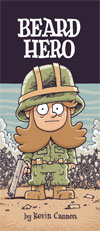
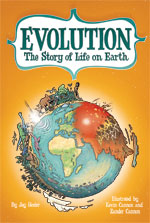
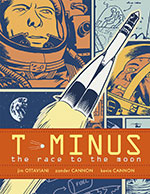
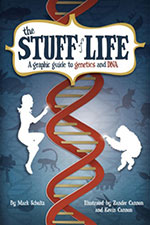
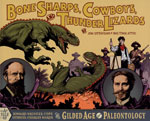
8 comments:
Good stuff, Zander.
The last time I did the Hour Comic Book Challenge I did spend part of the first hour to give myself a rough idea of a story and do a few sketches of characters. I don't think this was a bad idea, but the problem was I did not come up with a way for the story to end so I did the "To be continued" which I wish I hadn't had too.
So this year I am going to come up with an idea for the start and end and then figure the middle as I go.
For paper am going to use card stock that I picked up at Kelly Paper store for about $.10 for a 11" x 17" sheet that I will cut down and pre-rule for the jam. It's cheap, but durable.
For details I found using some loose grey washes of watercolor or qouche can quickly give you foliage and backgrounds that will not take a lot of time to do.
Last time I found it good to bring a small, very possible action figure that can be used to figure out how to draw a figure quickly.
Hmm. An action figure-- that's a pretty good idea. I have a GI Joe just sitting here at the studio that I might use; unfortunately, it's this one.
Wow, that figure is awesome.
Forgive my simple-ness, but how does that pagination template work when you're working in 8.5 x 5.5?
By the way, thanks for taking the time to get all that down on the web. Those were fantastic tips!
Jessaroo-- I use 11x17 sheets in landscape ratio, so the page width and height are both half the sheet width and height.
Forgiven. :-)
Zander
20160524meiqing
adidas superstars
jordan pas cher
ray ban sunglasses
christian louboutin uk
adidas pure boost
yeezy boost 350 black
coach outlet store
cheap jerseys wholesale
air max 95
ray bans
timberlands
ralph lauren outlet
abercrombie and fitch
lacoste shoes
designer bags
nike blazer
ray ban outlet
michael kors outlet
nike air force 1
polo outlet
sac longchamp
toms shoes
ray ban sunglasses
puma shoes
fitflops clearance
burberry outlet online
cheap ferragamo shoes
fitflops
canada goose
true religion outlet
fake oakleys outlet
ray ban sunglasses
coach purses
michael kors outlet online
hollister clothing
hollister shirts
www0417
titans jersey
ray ban sunglasses
cheap jordan shoes
nike air huarache
true religion outlet store
kate spade sale
hugo boss outlet
cheap nike shoes
true religion outlet
coach outlet online
Post a Comment